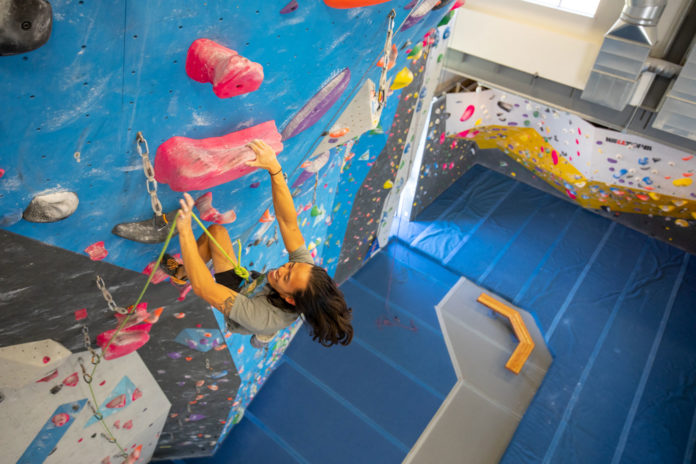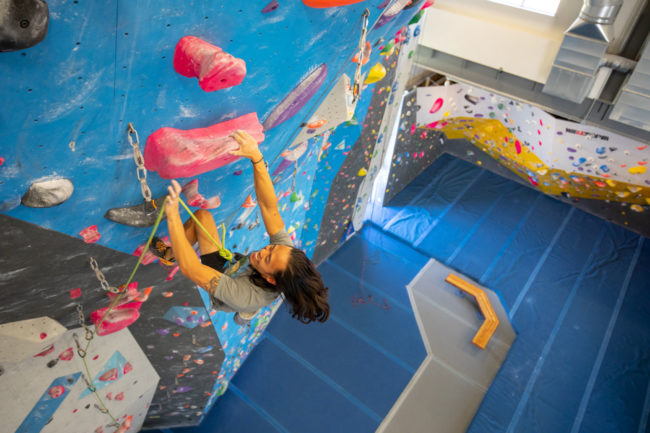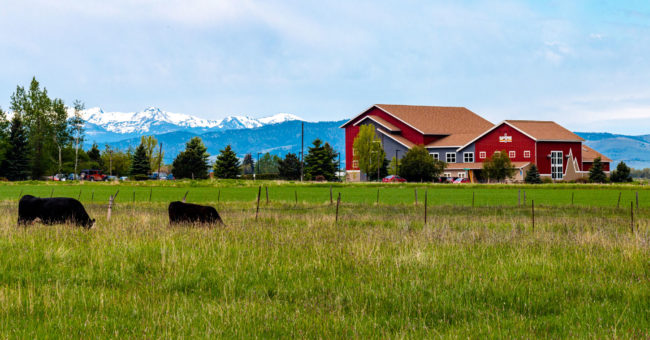

For the past couple of months, climbing gyms around North America have been steadily reopening. But the abundance of reopenings does not equal a return to operational normalcy for any gym. Protocols and mitigation efforts related to the ongoing threat of COVID-19 are being widely embraced by the industry and largely bolstered by the Climbing Wall Association’s comprehensive online packet known as the “Roadmap to Reopening.”
For all gyms, a big question becomes how to best—and most effectively—relay the abundance of COVID-19 strategies, protocols, and directives to customers. And there’s no singular answer. One option is to post informative signage around the gym—and hope that it gets read by members. Another proactive measure is to require gym attendees to read and sign new waivers that are thick with COVID-19 content. There is also a collective hope that customers who return to any climbing gym will already be informed of many COVID-19-related health protocols from having watched the news for the past several months; indeed, concepts such as social distancing and wearing masks are likely not surprising to most people who enter a reopened climbing gym this summer.
Still, climbing gyms are unique environments for COVID-19 protective measures. Frankly, it’s uncomfortable to climb with a mask; it seems counter-intuitive to social distance when belay buddy checks and spotting while bouldering typically necessitate a degree of closeness; and it’s easy to forget about hand sanitization when plastic holds are being grabbed repeatedly during a hard session.
For those reasons, and to make sure every attendee is being thoroughly informed, a number of gyms have started giving all customers COVID-19 orientations, and other gyms are mulling over the idea as a possibility too. “My training of thought is that a return to ‘normal’ is going to require being aware of people’s comfort level,” says Brian Doyle, co-owner/operator of Climb Tacoma in Tacoma, Washington. Climb Tacoma is pondering giving COVID-19 orientations upon its reopening. “I feel like taking the time to communicate expected behavior to protect each other will put people at ease,” adds Doyle.
COVID-19 orientations are not necessarily limited to in-person tutorials given by gym staff to customers. For example, Ground Up Climbing Centre in Squamish, British Columbia, gives in-person reopening orientations and has posted content online like this YouTube video. “We ask that you take the time to understand the new risks and the new policies in place to protect our staff and our community,” the video explains at its onset.
Spire Climbing + Fitness in Bozeman, Montana, is another example of a gym that has created its own orientation video to cover new safety protocols. The video explains various requirements related to masks, hand sanitizer and social distancing, as well as gym zoning, spacing between cardio equipment, and ongoing disinfecting measures taken by the Spire staff. CBJ reached out to Spire’s Marketing Manager, Ty Morrison-Heath, to talk about COVID-19 orientation in greater detail and discuss whether COVID-specific orientation is something that more climbing gyms should be doing.
CBJ: A detailed COVID-19 orientation—either via video or in-person—is not something that all gyms are giving customers right now. Should gyms be providing COVID-19 orientations?
Morrison-Heath: I think the answer is 100-percent ‘Yes.’ If you aren’t communicating your expectations with your customers on how to keep each other safe then it will be much harder to make the facility feel safe for those who are still on the fence about if they should be in your gym at all. Having every customer do an explicit COVID orientation with our desk staff on their first visit has been well-received and sets the tone on how we can get back to doing the thing we love, which is to climb, do yoga, and workout while keeping the risk down. Keeping the in-person orientation short is also important or you will lose people’s attention.
CBJ: So, Spire gives in-person COVID orientations to customers, in addition to having that video posted online?
Morrison-Heath: Absolutely. I think the in-person orientation is more important than the video because it immediately reinforces the message that we are taking this seriously the second a customer walks through the door. It also gives them a chance to ask any questions they have of our staff without feeling like they are intruding.
Our staff is walking customers through our COVID-19 orientation, which has changed over time as we’ve entered the different phases of reopening. We kept all of it on one webpage and in chronological order because we feel that it shows our commitment to keeping our community safe over the entire crisis. It also allows those who are concerned to see how our policies have changed over time and be assured we aren’t rushing into reopening too quickly.

CBJ: Where did the idea of making a COVID-19 orientation video come from? And why video rather than, say, a new waiver or just posting signs around the gym?
Morrison-Heath: As our management team cranked on our COVID-19 policies and written orientation, we came to the realization that it was going to be a dense document that was going to span almost a page of bullet points. As many of us know with our waivers, customers tend to glaze over when presented with a wordy document, and we feared many customers were going to miss out on the ways we were aiming to protect them while in our facility. A video conveys this information in a much more digestible format that people will voluntarily watch before they come into the facility and may even encourage them to come back sooner.
We also recognized that communicating with the “hesitant to come back” customers was vitally important to our business, and a video is a much easier way to show how you are keeping your gym sanitary than a written document they are unlikely to read.
CBJ: How have Spire’s customers responded to the COVID-19 orientation video?
Morrison-Heath: The response has been great. In a small town like Bozeman, I’m constantly interacting with our members when outside the facility—and several have approached me when at the grocery store (while remaining socially distant) to tell me that they appreciated knowing what we are doing and were coming back in because they felt like we were taking it seriously. We do have posted versions of our guidelines, but I don’t think typed documents elicit the same response these days as videos. We’ve also had a lot of great reviews lately, with one reviewer explicitly mentioning that they felt safe and we were taking precautions against COVID, although I think that also has to do with our in-person orientation we give every customer.
CBJ: Can you give some advice to other gyms that might read this and want to make their own COVID-19 orientation video?
Morrison-Heath: Keep it short and very tight. We spent less than a day scripting, shooting, and editing (I have a background in video production), but expect it to take time to do it right. Make it professional or it might actually backfire and result in people being less confident that you are taking it seriously.
Make sure your audio is great and closed caption it for those watching on social media with their sound off. Rev.com offers caption services for $1 per minute and is really an easy way to get it done quickly. Use staff that customers know (Kim—in our video—is our Youth Program Manager and did an awesome job) so they feel like they have a connection to the presenter.

John Burgman is the author of High Drama, a book that chronicles the history of American competition climbing. He is a Fulbright journalism grant recipient and a former magazine editor. He holds a master’s degree from New York University and bachelor’s degree from Miami University. In addition to writing, he coaches a youth bouldering team. Follow him on Twitter @John_Burgman and Instagram @jbclimbs. Read our interview Meet John Burgman, U.S. Comp Climbing’s Top Journalist.









